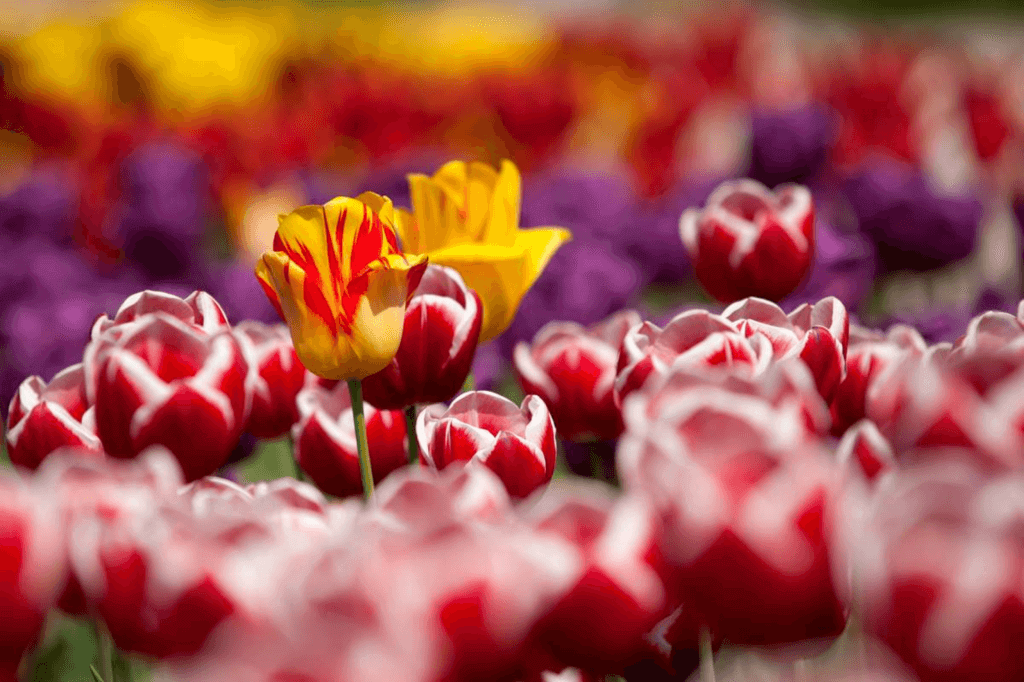Tulip Day
Tulip Day is observed next on Wednesday, May 13th, 2026 (123 days from today).

Tulip Day is observed annually on May 13th to promote the start of the cut tulip flower season.
Each year spring brings the promise of a new life with blooming buds and flowers, and May 1th holds a special place in the hearts of flower enthusiasts as Tulip Day. Tulip festivals are held around the country around this time in honor of this flower, which has maintained its popularity for over a thousand years.
About 100 species and more than 3,000 varieties of tulips exist to this day, and many of these have been created by gardeners and scientists to appeal to the public's taste. The popularity and versatility of this classic flower over the years also serves as a lesson for content marketers trying to stay relevant in today's ever-changing marketplace.
Origin of the Tulip
Although they can be found all over the world today, tulips originally grew wild in Central Asia, until first planted by the Turks - that is, around AD 1,000 - to take their healing properties. However, it was not until the tulip flower arrived in the Netherlands in the 1500s that it began to gain popularity. Carolus Clusius, a botanist at Leiden University, is largely credited with drawing the world's attention to tulips.
By the mid-17th century, "Tulip Mania" had taken over Europe, and the popularity and value of tulips began to skyrocket. Tulips became one of the main subjects in the art world, featured in the paintings of Judith Leyster and Hans Bollongier, and celebrated in the first ever tulip festivals.
Around this time, tulips also became a sort of status symbol, and gardeners began experimenting, creating new hybrids and ever more colorful varieties. These mutations carry more value and are seen as status symbols - the newer or rarer the tulip, the richer and more influential a person is. Bulbs sold for hundreds of dollars above today's prices, and they even became a currency of their own. Traders and people who had invested in light bulbs went from rich to poor almost overnight, when prices dropped to more reasonable levels. The crash was so severe that some consider "Tulip Mania" to be the first economic bubble to burst. Today, tulips often rank as one of the most popular flowers, standing among the varieties of roses, carnations, and daisies. New varieties continue to hit the market in response to consumer demand for brighter, bolder colors and new hybrid versions of this iconic flower. For example, "black tulips" are the result of more than 400 years of study and work. Although this cultivar is indeed dark purple in color, it has great appeal to aquarists who are always on the lookout for exotic things.
Why Tulips?
Not many flowers are as celebrated as tulips. What about the tulip that has led to its popularity and success? Perhaps the fact that it appears at the beginning of the year and, planted in large clumps, makes for a spectacular sight in its many colors and shapes? Maybe it's because of its near-perfect symmetry. Although the flowers have three petals and three sepals, because the sepals are roughly the same size and shape as the petals, tulips appear to have six petals to one gourd.
The fascination with tulips has come a long way. It is clear from the origins of the various tulip festivals around the world that the Dutch played a huge role in introducing tulips to other parts of the world and still play an important role in its cultivation and dissemination. However, the tulip is native to Central Asia, where it grows as a wildflower. It was first cultivated by the Turks around 1,000 AD and is still an important part of the country's culture. Suleiman the Magnificent, who ascended the throne in 1520, was very fond of tulips. They appeared in embroidery on his clothes and his subjects had to provide him with a large number of light bulbs. The early 18th century was known as the "Age of Tulips" (Lâle Devri) when tulips were highly valued by high Ottoman society. Tulips have become symbols of nobility and privilege and are often depicted on ceramic tiles, paintings and embroidery. At this time, long, slender flowers with pointed petals were especially popular and used in illustrations.
How to celebrate Tulip Day
Usually, this is the best time to visit Amsterdam to see the tulips, as on this day Dam Square is transformed into a tulip picking garden. Here people can pick flowers for free. The event is organized by Dutch tulip growers and in the months that follow, 1.7 billion flowers will light up homes around the world.
2022 is the 11th anniversary of this celebration, this year the theme is 'Sharing Happiness!’ Due to the situation this year there will be no tulip picking garden. But that doesn't mean we shouldn't celebrate the start of the season.
When the current circumstances make it difficult to connect with people, we crave that connection even more. Since the tulip symbolizes hope and positivity, it is the perfect flower to help us stay connected even at a distance. Tulips are the connection, so why not choose a cheerful bunch for yourself and a bunch for your loved one?
Observed
Tulip Day has been observed annually on May 13th.Dates
Monday, May 13th, 2024
Tuesday, May 13th, 2025
Wednesday, May 13th, 2026
Thursday, May 13th, 2027
Saturday, May 13th, 2028


